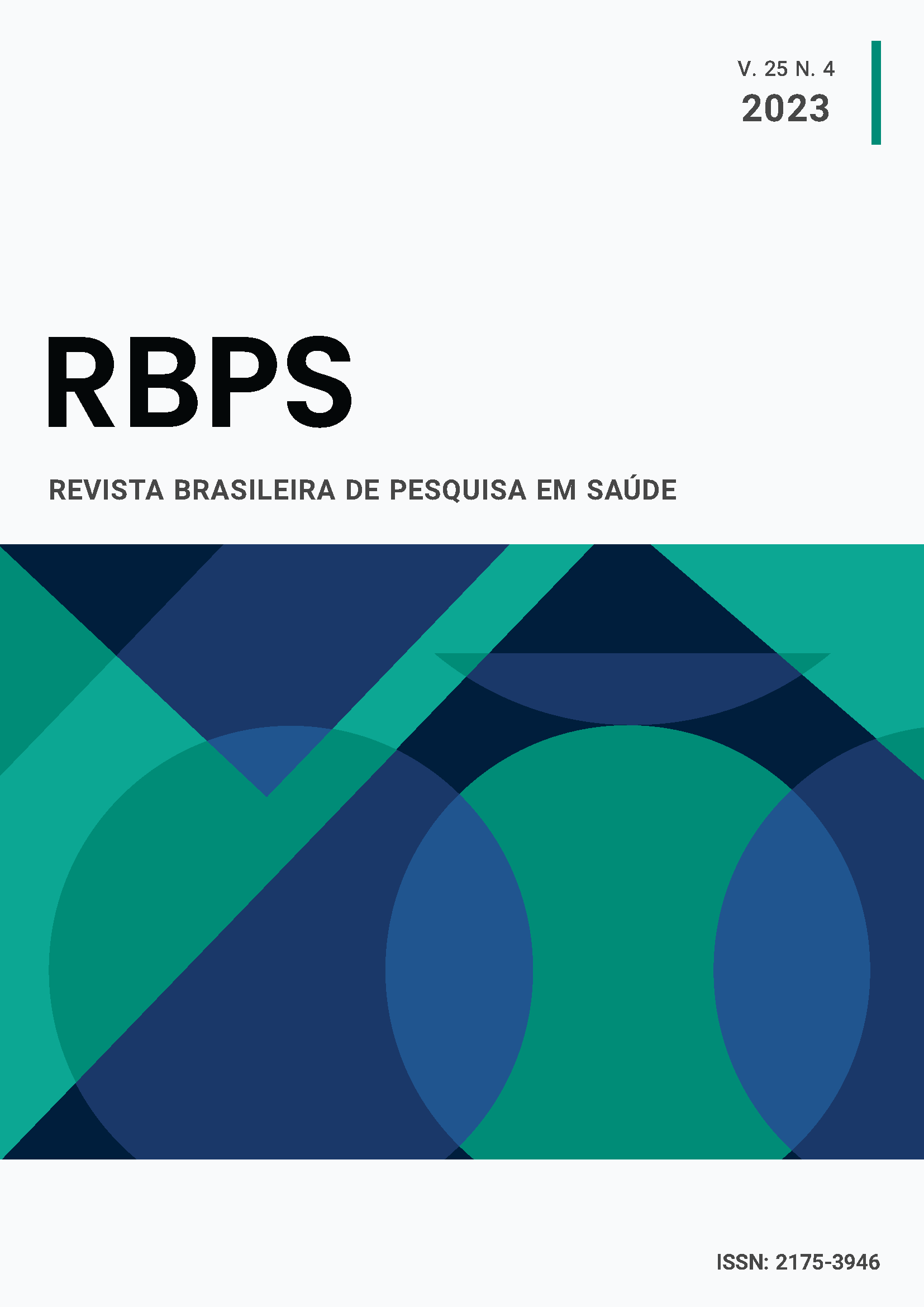Avaliação energética do leite materno em mães de recém-nascidos pré-termo: comparação de métodos de extração por meio da técnica do crematócrito
DOI:
https://doi.org/10.47456/rbps.v25i4.40684Palavras-chave:
Leite humano, Extração de leite, AAtenção Primária à SaúdeResumo
Introdução: Frequentemente, os recém-nascidos pré-termo não podem ser alimentados por via oral, e o leite humano pode ser ordenhado (expressão manual ou com auxílio de uma bomba) e administrado por sonda gástrica. O leite humano das mães desses recém-nascidos apresenta macronutrientes em concentrações diferentes, quando comparados ao leite das mães de recém-nascidos a termo. Porém, ainda não é claro o efeito das diferentes técnicas de ordenha do leite materno na composição dos macronutrientes nem no conteúdo energético. Objetivo: Avaliar e comparar o conteúdo energético do leite humano cru de mães de recém-nascidos pré-termo de acordo com a forma de extração. Métodos: Foram avaliadas alíquotas com 0,5 ml de leite humano cru extraído por bomba elétrica e por ordenha manual, determinando-se primeiramente o crematócrito e, posteriormente, por meio da aplicação de fórmulas matemáticas, o teor energético. Resultados: Foram avaliadas 114 amostras de leite humano cru (colostro e leite maduro) extraídos por bomba elétrica e por ordenha manual. A média do teor energético obtido foi de 53,9 ± 11,6 kcal/dl na extração por bomba e de 58,2 ± 14,9 kcal/dl no colostro; e a média do teor energético no leite maduro foi de 61,7 ± 13,2 kcal/dl na extração manual e de 64,7 ± 13,1 kcal/dl por bomba. Porém, as diferenças não são estatisticamente significativas. Conclusão: O método de ordenha parece não interferir no conteúdo energético do leite humano de mães de recém-nascidos pré-termo.
Downloads
Referências
An official position statement of the Association of Women’s Health, Obstetric and Neonatal Nurses. Breastfeeding and the Use of Human Milk. J Obstet Gynecol Neonatal Nurs. 2021; 50(5):e1-e5.
Cerasani J, Ceroni F, De Cosmi V, et al. Human Milk Feeding and Preterm Infants’ Growth and Body Composition: A Litera¬ture Review. Nutrients. 2020; 12(4):1155.
Underwood MA. Human milk for the premature infant. Pediatr Clin North Am. 2013; 60(1):189-207.
Boquien CY. Human Milk: An Ideal Food for Nutrition of Preterm Newborn. Front Pediatr. 2018; 6:295.
Mosca F, Giannì ML. Human milk: composition and health ben¬efits. Pediatr Med Chir. 2017; 39(2):155
Bauer J, Gerss J. Longitudinal analysis of macronutrients and minerals in human milk produced by mothers of preterm infants. Clin Nutr. 2011; 30(2):215-20.
Lau C. Development of infant oral feeding skills: what do we know? Am J Clin Nutr. 2016; 103(Suppl):616S-21S
Becker GE, Smith HA, Cooney F. Methods of milk expres¬sion for lactating women. Cochrane Database Syst Rev. 2016; 9(9):CD006170.
Dhanawat A, Behura SS, Panda SK. Manual Method vs Breast Pump for Breast Milk Expression in Mothers of Preterm Babies During First Postnatal Week: A Randomized Controlled Trial. Indian Pediatr. 2022; 59(8):608-612.
Eglash A, Malloy ML. Breastmilk Expression and Breast Pump Technology. Clin Obstet Gynecol. 2015; 58(4):855-67.
Wang CD, Chu PS, Mellen BG, Shenai JP. Creamatocrit and the nutrient composition of human milk. J Perinatol. 1999; 19(5):343-6.
Haiden N. Postdischarge Nutrition of Preterm Infants: Breast¬feeding, Complementary Foods, Eating Behavior and Feeding Problems. Nestle Nutr Inst Workshop Ser. 2021; 96:34-44.
Lin YH, Hsu YC, Lin MC, Chen CH, Wang TM. The association of macronutrients in human milk with the growth of preterm infants. PLoS One. 2020; 15(3):e0230800
Choi A, Fusch G, Rochow N, Sheikh N, Fusch C. Establishment of micromethods for macronutrient contents analysis in breast milk. Matern Child Nutr. 2015; 11(4):761-72.
Kociszewska-Najman B, Borek-Dzieciol B, Szpotanska-Sikorska M, Wilkos E, Pietrzak B, Wielgos M. The creamatocrit, fat and energy concentration in human milk produced by mothers of preterm and term infants. J Matern Fetal Neonatal Med. 2012; 25(9):1599-602.
Tie WJ, Kent JC, Tat Lai C, Rea A, Hepworth AR, Murray K, Ged¬des DT. Reproducibility of the creamatocrit technique for the measurement of fat content in human milk. Food Chem. 2021.
Mangel, L. et al. Higher Fat Content in Breastmilk Expressed Man¬ually: A Randomized Trial. Breastfeed Med. 2015; 10(7):352-4.
Morton J et al. Combining hand techniques with electric pump¬ing increases the caloric content of milk in mothers of preterm infants. J Perinatol 2012; 32(10):791-6.
Prime DK, Garbin CP, Hartmann PE, Kent JC. Simultaneous breast expression in breastfeeding women is more efficacious than sequential breast expression. Breastfeed Med. 2012; 7(6):442-7.
da Silva CBM, do Valle BV, de Matos ÚMA, Villarosa do Ama¬ral YND, Moreira MEL, Vieira AA. Influence of different breast expression techniques on human colostrum macronutrient con¬centrations. J Perinatol. 2021; 41(5):1065-1068.
Perrella S, Gridneva Z, Lai CT, Stinson L, George A, Bil¬ston-John S, Geddes D. Human milk composition promotes optimal infant growth, development and health. Semin Perina¬tol 2021; 45(2):151380.
Downloads
Publicado
Como Citar
Edição
Seção
Licença
Copyright (c) 2023 Revista Brasileira de Pesquisa em Saúde/Brazilian Journal of Health Research

Este trabalho está licenciado sob uma licença Creative Commons Attribution-NonCommercial-NoDerivatives 4.0 International License.





















